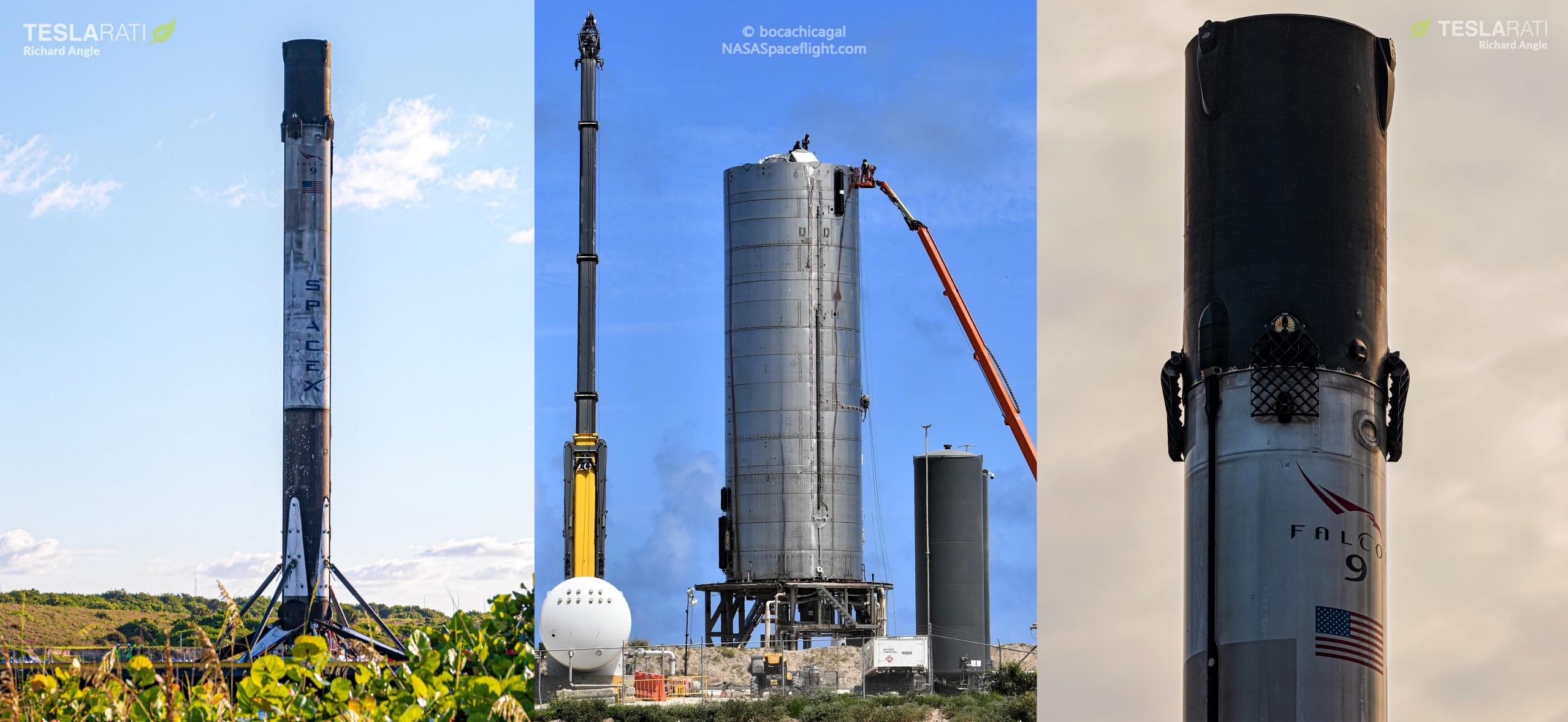

News
SpaceX eyes two Falcon 9 launches and a Starship hop in three days (Update: one day!)
Update: In a surprise twist, SpaceX has confirmed plans to launch SAOCOM 1B, Starlink-11, and hop Starship SN6 in less than ten hours on August 30th.
Contingent upon a ULA Delta IV Heavy launch on August 29th, Starlink-11 is scheduled to lift off on a Falcon 9 rocket no earlier than (NET) 10:12 am EDT (UTC-4), followed by SAOCOM 1B on a separate Falcon 9 NET 7:18 pm EDT (UTC-4). Simultaneously, SpaceX is currently working towards a second full-scale Starship hop test between 8 am and 8 pm CDT (UTC-5) on Sunday, August 30th.
Pending an August 29th mission from competitor ULA, SpaceX aims to attempt two orbital Falcon 9 launches and a Starship hop test over the course of just a few days.
A United Launch Alliance (ULA) Delta IV Heavy rocket was originally scheduled to launch the secretive National Reconnaissance Office 44 (NROL-44) spy satellite on Wednesday before the customer requested a 24-hour delay and technical rocket bugs pushed the mission to no earlier than (NET) August 27th and now August 29th. Delta IV Heavy’s low cadence of one or two annual launches has traditionally made it hard for the rocket to launch on time, offering very few opportunities for the company to work the kinks out of the complex system.
ULA’s NROL-44 launch currently holds precedence over other missions scheduled around the same time, meaning that SpaceX has no choice but to delay its own launches every time the ULA mission slips. SpaceX has two launches currently in queue: Argentinian Earth observation satellite SAOCOM 1B was scheduled to launch NET 7:19 pm EDT (UTC-4) on August 28th, while SpaceX’s 11th Starlink v1.0 launch was expected to lift off NET 10:08 am EDIT (UTC-4) on August 30th. Simultaneously, a SpaceX Starship prototype is tracking towards its first short hop somewhere in between those orbital launches. ULA’s second NROL-44 delay has thrown both SpaceX launch dates somewhat up in the air, however.
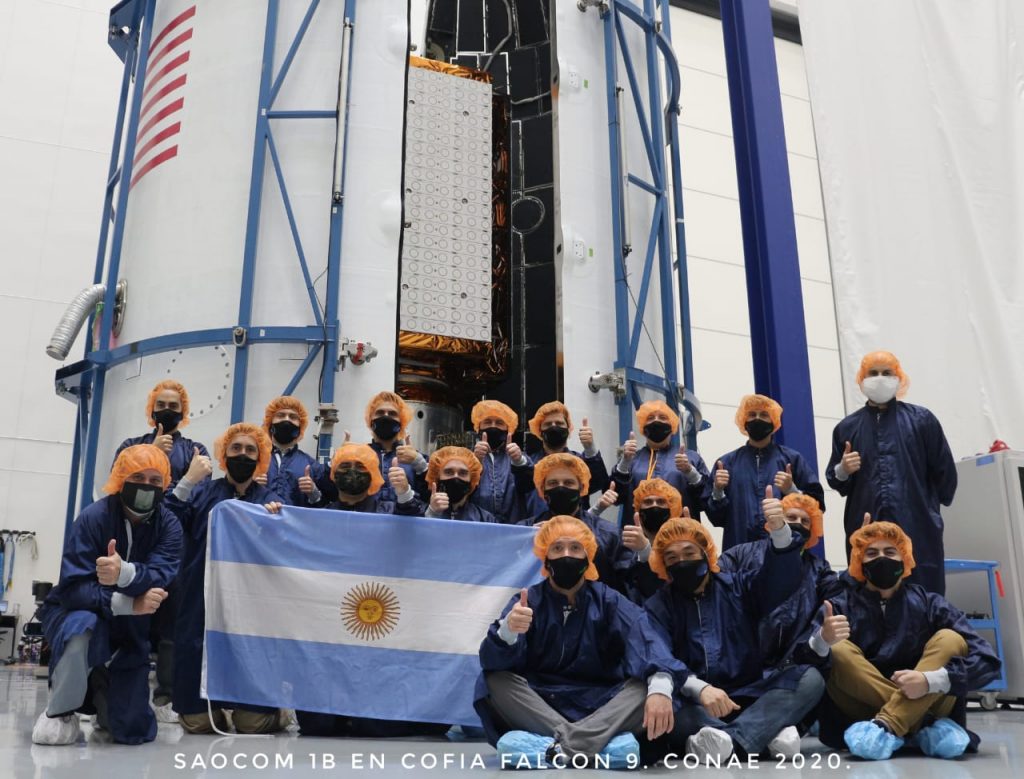
Starship SN6 Flight 1
Recent delays to SpaceX’s East Coast launches have pushed the company’s second full-scale Starship hop test to the front of the line. Starship serial number 6 (SN6) is currently scheduled to attempt its first 150m (~500 ft) hop as early as Saturday, August 29th. Coming less than four weeks after Starship SN5 became the first full-scale prototype to successfully lift off (and land) on August 4th, a second successful hop – with an entirely different Raptor engine and Starship prototype – would be an extraordinary feat.
Meanwhile, SpaceX is simultaneously inspecting and repairing the hop-proven Starship SN5 prototype – most likely with the intention of flying the ship again in the near future. According to CEO Elon Musk, SpaceX’s current goal is to perform “several” fast-paced Starship hop tests to streamline the new rocket’s launch operations. The August 29th window for SN6’s 150m hop lasts from 8am to 8pm and the rocket could attempt to lift off as early as 10am to noon.
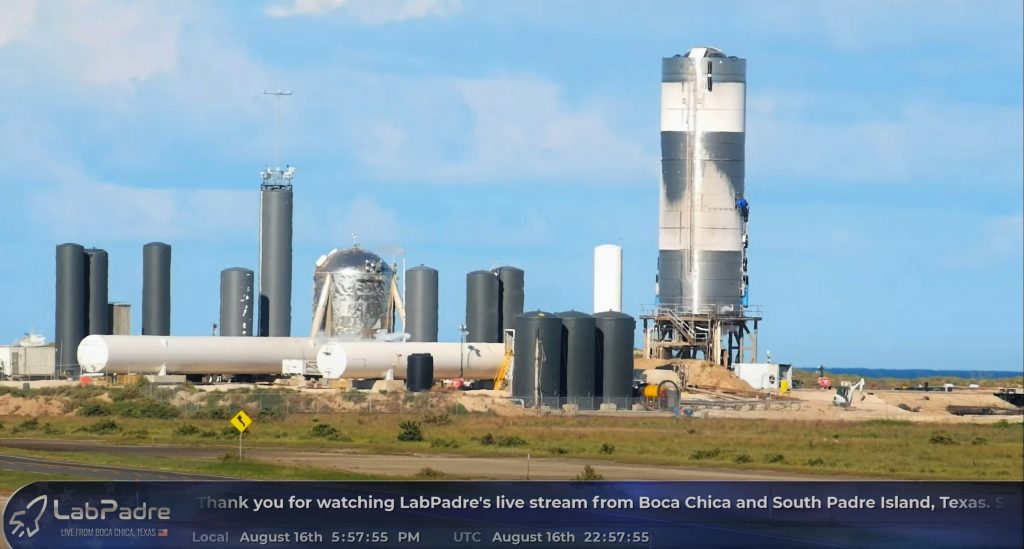
SAOCOM 1B
Sister to the SAOCOM 1A satellite SpaceX launched from California in October 2018, SAOCOM 1B is more or less identical. Notably, however, it will launch from Florida – the first polar launch planned from the US East Coast in half a century. The reason the United States effectively retired the Eastern polar launch corridor is a bizarre story of Cold War tensions gone awry but the gist is that SpaceX’s Falcon 9 rocket will ‘dogleg’ midflight, changing its trajectory to avoid overflying populated regions.
Originally scheduled to launch as early as March 30th, the Argentinian satellite has been relentlessly delayed by coronavirus-related restrictions and technical delays. SAOCOM 1B’s Falcon 9 booster was even swapped amidst the delays, switching from B1051 to B1059 as SpaceX strove to fill the gap in its manifest with internal Starlink missions. Now, NROL-44’s technical launch delays have pushed the Falcon 9 mission from August 27th to NET 7:19 pm EDT (UTC-4) on Sunday, August 30th.
SAOCOM 1B will be SpaceX’s first return-to-launch-site (RTLS) booster landing since March 2020.
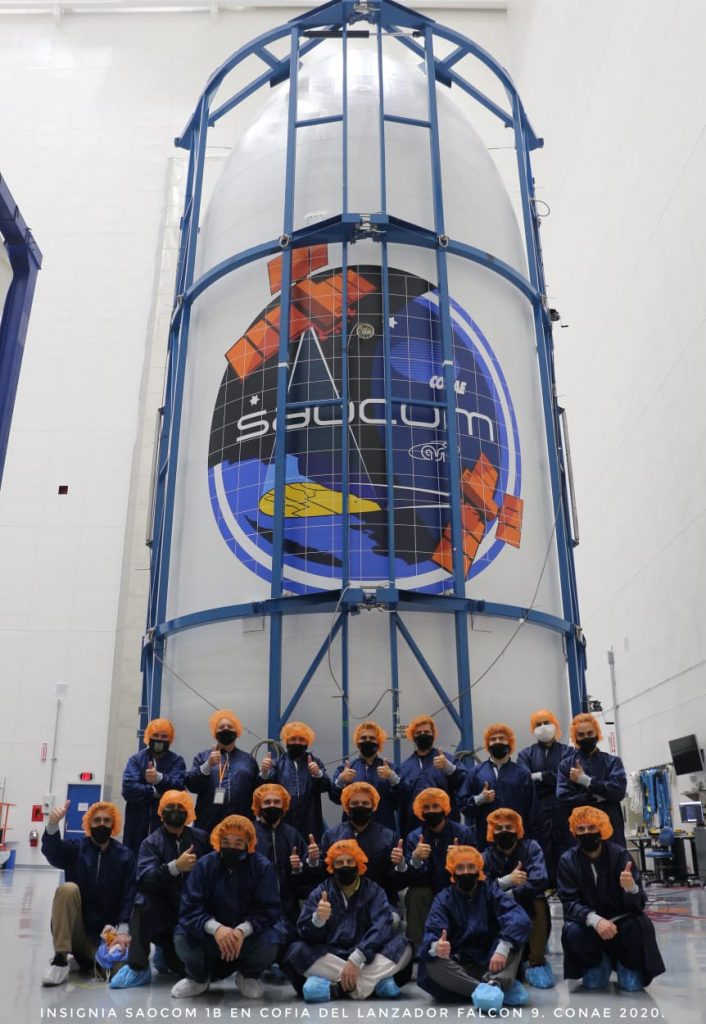
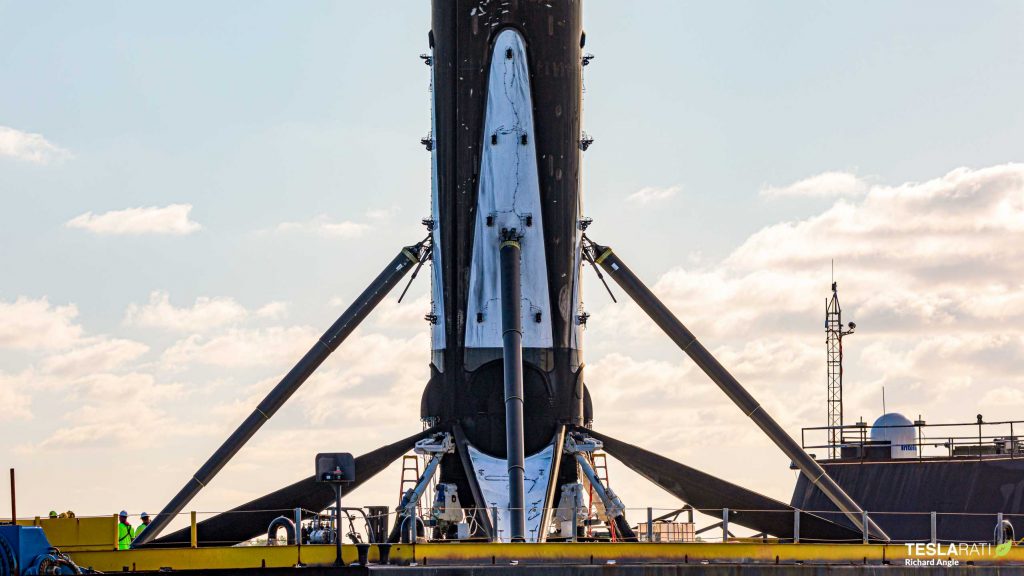
Starlink-11
Finally, prior to NROL-44’s 72-hour slip, SpaceX’s 11th Starlink v1.0 mission and 12th Starlink launch overall was scheduled NET Sunday, August 30th. ULA’s delays have added considerable uncertainty, at one point pushing Starlink-11 to a tentative September 1st NET before the launch date (rather oddly) slipped back into late-August. Assuming SpaceX still has to wait for ULA, the most likely alternative is August 31st, given that August 30th would necessitate two launches in less than ten hours.
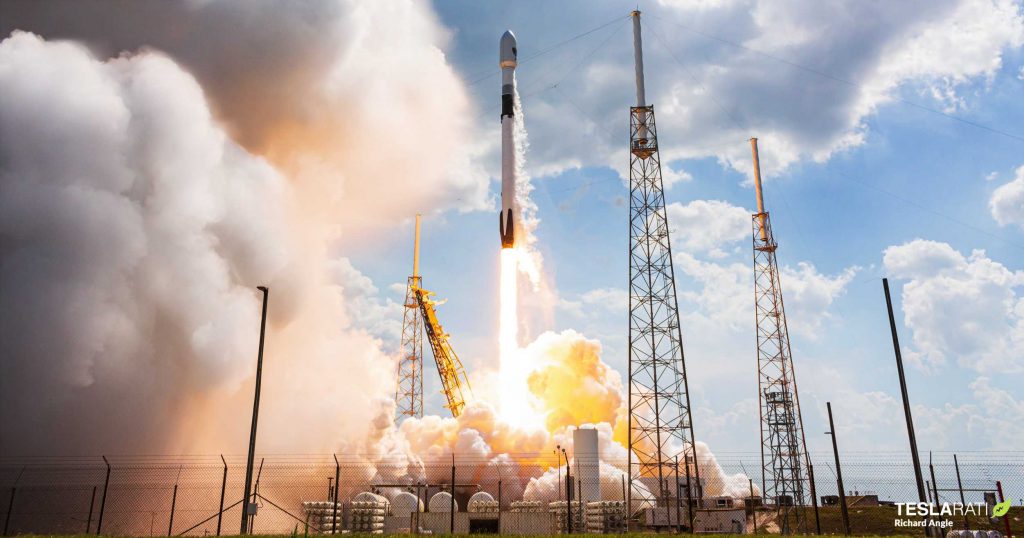
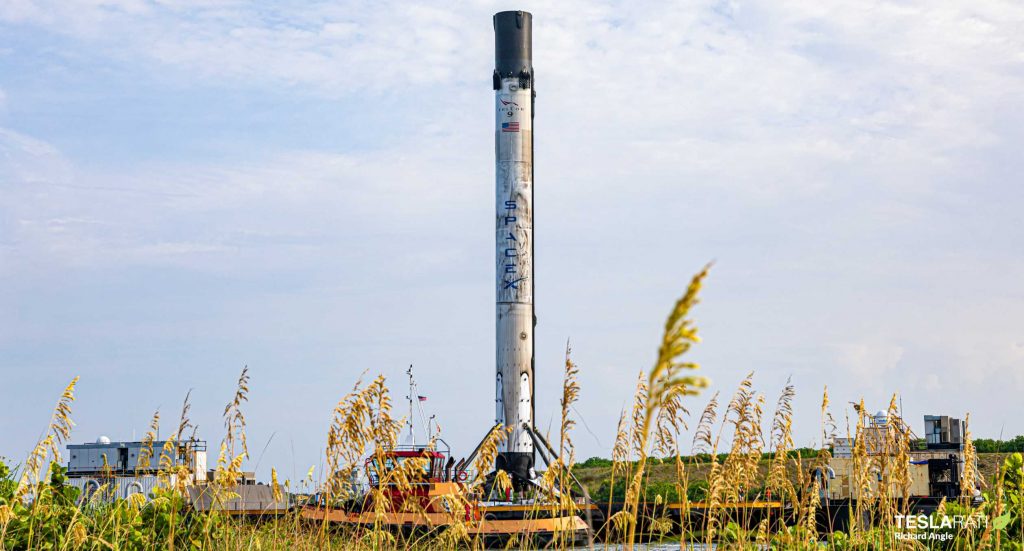
Check out Teslarati’s Marketplace! We offer Tesla accessories, including for the Tesla Cybertruck and Tesla Model 3.
Elon Musk
Tesla investors will be shocked by Jim Cramer’s latest assessment
Jim Cramer is now speaking positively about Tesla, especially in terms of its Robotaxi performance and its perception as a company.

Tesla investors will be shocked by analyst Jim Cramer’s latest assessment of the company.
When it comes to Tesla analysts, many of them are consistent. The bulls usually stay the bulls, and the bears usually stay the bears. The notable analysts on each side are Dan Ives and Adam Jonas for the bulls, and Gordon Johnson for the bears.
Jim Cramer is one analyst who does not necessarily fit this mold. Cramer, who hosts CNBC’s Mad Money, has switched his opinion on Tesla stock (NASDAQ: TSLA) many times.
He has been bullish, like he was when he said the stock was a “sleeping giant” two years ago, and he has been bearish, like he was when he said there was “nothing magnificent” about the company just a few months ago.
Now, he is back to being a bull.
Cramer’s comments were related to two key points: how NVIDIA CEO Jensen Huang describes Tesla after working closely with the Company through their transactions, and how it is not a car company, as well as the recent launch of the Robotaxi fleet.
Jensen Huang’s Tesla Narrative
Cramer says that the narrative on quarterly and annual deliveries is overblown, and those who continue to worry about Tesla’s performance on that metric are misled.
“It’s not a car company,” he said.
He went on to say that people like Huang speak highly of Tesla, and that should be enough to deter any true skepticism:
“I believe what Musk says cause Musk is working with Jensen and Jensen’s telling me what’s happening on the other side is pretty amazing.”
Tesla self-driving development gets huge compliment from NVIDIA CEO
Robotaxi Launch
Many media outlets are being extremely negative regarding the early rollout of Tesla’s Robotaxi platform in Austin, Texas.
There have been a handful of small issues, but nothing significant. Cramer says that humans make mistakes in vehicles too, yet, when Tesla’s test phase of the Robotaxi does it, it’s front page news and needs to be magnified.
He said:
“Look, I mean, drivers make mistakes all the time. Why should we hold Tesla to a standard where there can be no mistakes?”
It’s refreshing to hear Cramer speak logically about the Robotaxi fleet, as Tesla has taken every measure to ensure there are no mishaps. There are safety monitors in the passenger seat, and the area of travel is limited, confined to a small number of people.
Tesla is still improving and hopes to remove teleoperators and safety monitors slowly, as CEO Elon Musk said more freedom could be granted within one or two months.
News
Tesla launches ultra-fast V4 Superchargers in China for the first time
Tesla has V4 Superchargers rolling out in China for the first time.

Tesla already has nearly 12,000 Supercharger piles across mainland China. However, the company just initiated the rollout of the ultra-fast V4 Superchargers in China for the first time, bringing its quick-charging piles to the country for the first time since their launch last year.
The first batch of V4 Superchargers is now officially up and running in China, the company announced in a post on Chinese social media outlet Weibo today.
The company said in the post:
“The first batch of Tesla V4 Superchargers are online. Covering more service areas, high-speed charging is more convenient, and six-layer powerful protection such as rain and waterproof makes charging very safe. Simultaneously open to non-Tesla vehicles, and other brands of vehicles can also be charged. There are more than 70,000 Tesla Superchargers worldwide. The charging network layout covers 100% of the provincial capitals and municipalities in mainland China. More V4 Superchargers will be put into use across the country. Optimize the charging experience and improve energy replenishment efficiency. Tesla will accompany you to the mountains, rivers, lakes, and seas with pure electricity!”
The first V4 Superchargers Tesla installed in China are available in four cities across the country: Shanghai, Zhejiang, Gansu, and Chongqing.

Credit: Tesla China
Tesla has over 70,000 Superchargers worldwide. It is the most expansive and robust EV charging network in the world. It’s the main reason why so many companies have chosen to adopt Tesla’s charging connector in North America and Europe.
In China, some EVs can use Tesla Superchargers as well.
The V4 Supercharger is capable of charging vehicles at speeds of up to 325kW for vehicles in North America. This equates to over 1,000 miles per hour of charging.
Elon Musk
Elon Musk hints at when Tesla could reduce Safety Monitors from Robotaxi
Tesla could be reducing Safety Monitors from Robotaxi within ‘a month or two,’ CEO Elon Musk says.

Elon Musk hinted at when Tesla could begin reducing Safety Monitors from its Robotaxis. Safety Monitors are Tesla employees who sit in the front passenger seat during the driverless rides, and are there to ensure safety for occupants during the earliest rides.
Tesla launched its Robotaxi fleet in Austin last Sunday, and after eight days, videos and reviews from those who have ridden in the driverless vehicles have shown that the suite is safe, accurate, and well coordinated. However, there have been a few hiccups, but nothing that has put anyone’s safety in danger.
A vast majority — close to all of the rides — at least according to those who have ridden in the Robotaxi, have been performed without any real need for human intervention. We reported on what was the first intervention last week, as a Safety Monitor had to step in and stop the vehicle in a strange interaction with a UPS truck.
Watch the first true Tesla Robotaxi intervention by safety monitor
The Tesla and UPS delivery truck were going for the same street parking space, and the Tesla began to turn into it. The UPS driver parallel parked into the spot, which was much smaller than his truck. It seemed to be more of an instance of human error instead of the Robotaxi making the wrong move. This is something that the driverless cars will have to deal with because humans are aggressive and sometimes make moves they should not.
The Safety Monitors have not been too active in the vehicles. After all, we’ve only seen that single instance of an intervention. There was also an issue with the sun, when the Tesla braked abnormally due to the glare, but this was an instance where the car handled the scenario and proceeded normally.
With the Robotaxi fleet operating impressively, some are wondering when Tesla will begin scaling back both the Safety Monitors and Teleoperators that it is using to ensure safety with these early rides.
CEO Elon Musk answered the inquiry by stating, “As soon as we feel it is safe to do so. Probably within a month or two.”
As soon as we feel it is safe to do so.
Probably within a month or two. We continue to improve the Tesla AI with each mile driven.
— Elon Musk (@elonmusk) June 30, 2025
Musk’s response seems to confirm that there will be fewer Teleoperators and Safety Monitors in the coming months, but there will still be some within the fleet to ensure safety. Eventually, that number will get to zero.
Reaching a point where Tesla’s Robotaxi is driverless will be another significant milestone for the company and its path to fully autonomous ride-sharing.
Eventually, Tesla will roll out these capabilities to consumer-owned vehicles, offering them a path to generate revenue as their car operates autonomously and completes rides.
For now, Tesla is focusing on perfecting the area of Austin where it is currently offering driverless rides for just $4.20 to a small group of people.
-

 News5 days ago
News5 days agoTesla Robotaxi’s biggest challenge seems to be this one thing
-

 News2 weeks ago
News2 weeks agoTesla confirms massive hardware change for autonomy improvement
-

 Elon Musk2 weeks ago
Elon Musk2 weeks agoElon Musk slams Bloomberg’s shocking xAI cash burn claims
-

 News2 weeks ago
News2 weeks agoTesla features used to flunk 16-year-old’s driver license test
-

 News2 weeks ago
News2 weeks agoTesla China roars back with highest vehicle registrations this Q2 so far
-

 News2 weeks ago
News2 weeks agoTexas lawmakers urge Tesla to delay Austin robotaxi launch to September
-

 News2 weeks ago
News2 weeks agoTesla dominates Cars.com’s Made in America Index with clean sweep
-

 News2 weeks ago
News2 weeks agoTesla’s Grok integration will be more realistic with this cool feature





















